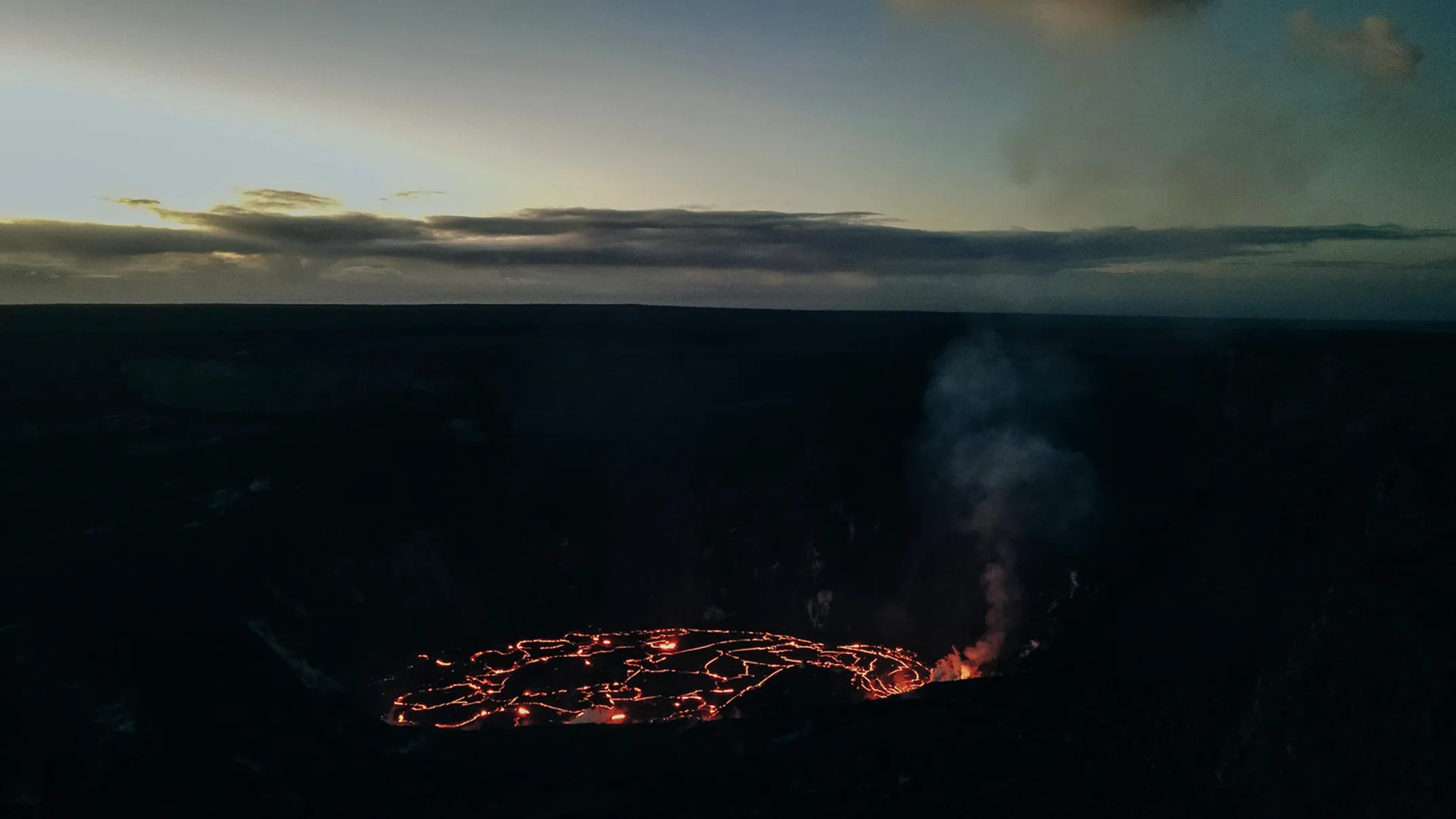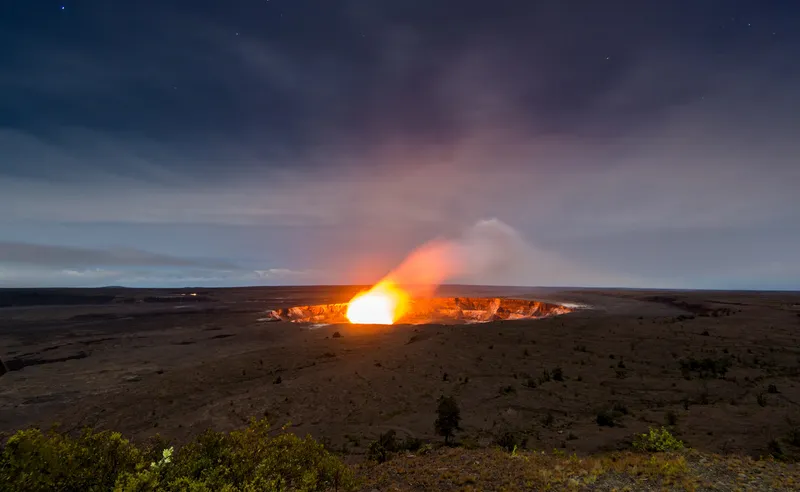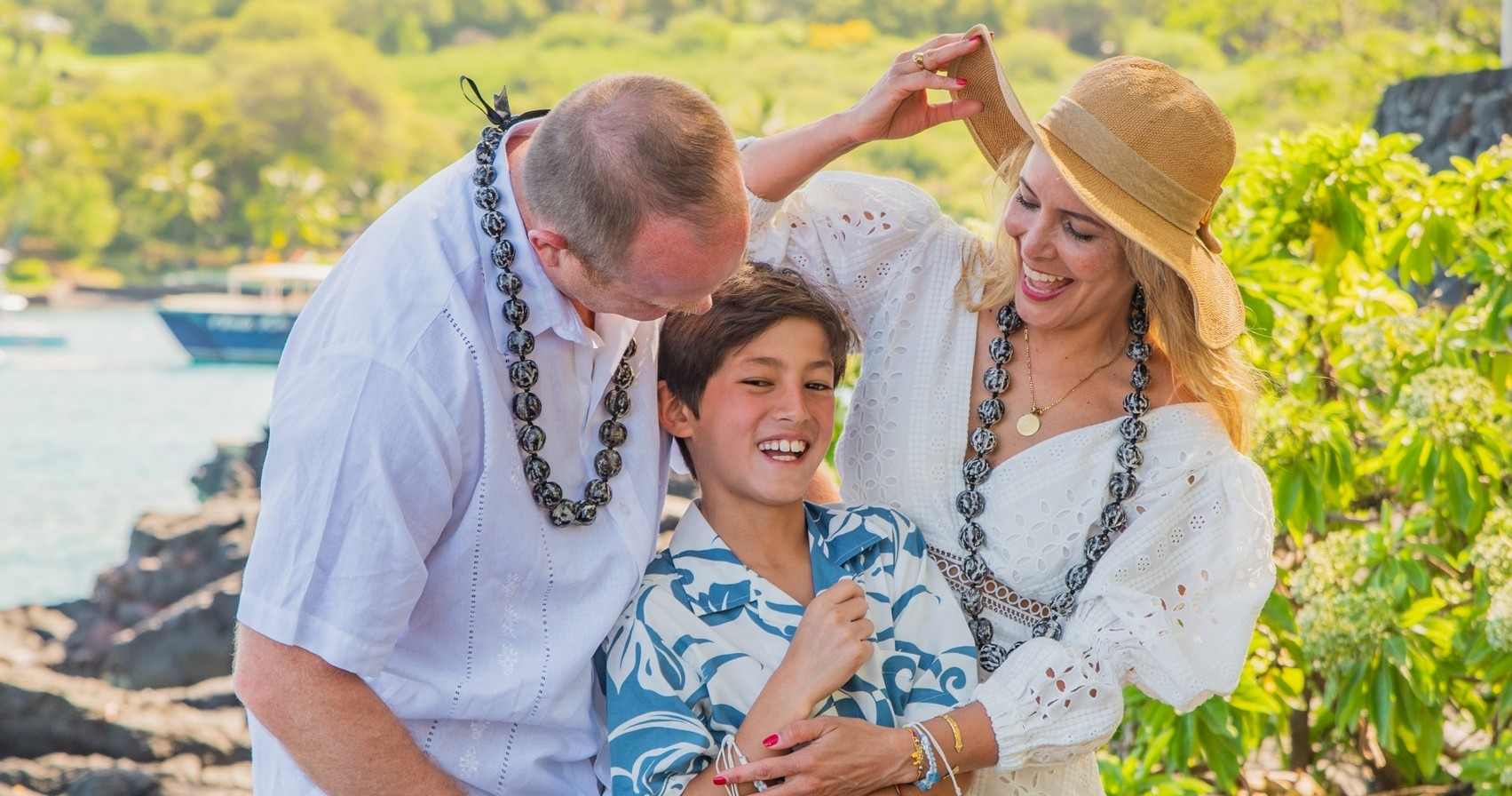
「Minivan Arrival」Honolulu Airport ⮕ Waikiki Hotels Exclusive Transfer
Family Photography Pros Oahu • Service • Honolulu • Oahu

Hawaiʻi Volcanoes National Park - Where Earth Creates New Land

Written by a Local Expert
Leilani AkoHawaiʻi Island is the youngest and largest in the Hawaiian chain. Here, the volcanic heart of Hawaii beats most powerfully. Hawaiʻi Volcanoes National Park is a UNESCO World Heritage Site and International Biosphere Reserve. It shows the raw forces that shape our planet.
The park displays stark contrasts and stunning beauty. Fiery eruptions meet the sea. Life reclaims the land with determination.
Always check the official National Park Service (NPS) and U.S. Geological Survey (USGS) Hawaiian Volcano Observatory (HVO) websites. Get the latest eruption updates and safety information before planning your visit.
The park hosts two of the world's most active and imposing volcanoes: Kīlauea and Mauna Loa.
Kīlauea is famous for frequent and dramatic eruptions. It shows episodic eruptive activity. Periods of lava flow sometimes separate with pauses. Its Halemaʻumaʻu crater is legendary as Pele's home. Kīlauea offers one of the planet's best chances to witness volcanic processes up close. Always respect its power and unpredictability.
Mauna Loa means "Long Mountain." It's Earth's largest active volcano by volume and area. It erupts less often than Kīlauea, but its eruptions can be massive. After its 2022 eruption, Mauna Loa's alert level is NORMAL/GREEN. This means a non-eruptive state.

Hiking in Hawaiʻi Volcanoes National Park offers unmatched experiences. You'll have intimate encounters with landscapes forged by fire. Trails range from easy rainforest walks to challenging treks across vast crater floors.
Moderate, 3.2 miles roundtrip, 2-3 hours
This signature park experience descends 400 feet through vibrant rainforest. You reach the still-steaming, solidified floor of Kīlauea Iki crater. Hikers cross the eerie, cracked surface of the former lava lake and pass the imposing Puʻu Puaʻi cinder cone.
Easy to Moderate, varies up to 11 miles
This extensive trail offers panoramic views of Kīlauea Caldera and active Halemaʻumaʻu crater. A notable paved section provides excellent accessible views for many visitors.
Easy, 0.4 miles, 10-20 minutes
An enchanting walk through fern-laden rainforest leads to this impressive 500-year-old lava tube. It formed when the outer crust of a lava river solidified while molten lava continued flowing within.
Easy, 1.0 mile, 25-45 minutes
This paved, accessible trail crosses landscape dramatically altered by the 1959 Kīlauea Iki eruption. Cinders from towering lava fountains buried the original ʻōhiʻa forest, leading to an overlook of Puʻupuaʻi ("gushing hill").
Moderate, 1.5 miles, 1-1.5 hours
This culturally significant trail leads across ancient pāhoehoe lava flow to Puʻuloa ("long hill"). It holds one of Hawaii's most extensive petroglyph fields with over 23,000 images offering profound connection to early Hawaiians.
From steaming craters to ancient lava tubes, discover the raw volcanic forces that continue to shape the Big Island.
Explore More Volcanoes11 miles around Kīlauea summit
19 miles to coast, 3,700 ft descent
For those who prefer vehicle exploration or have limited mobility, the park's scenic drives offer breathtaking vistas and access to numerous points of interest.
This 11-mile road circles the Kīlauea summit caldera. It provides access to many iconic overlooks like Kīlauea Overlook and Kīlauea Iki Overlook. It also reaches trailheads for many popular hikes. Road status can change, so check the park's website.
This dramatic 19-mile roadway descends approximately 3,700 feet from Kīlauea's summit to the Pacific coast. It crosses a stunning array of volcanic landscapes. These include numerous pit craters, vast lava flows from different eras, and ancient petroglyph fields.
The road ends at the coast where the impressive Hōlei Sea Arch stands. This shows the ocean's power against volcanic cliffs. No food, water, or fuel is available along this road. A ranger station near the road's end typically opens from 10 am to 9 pm.
The volcanic landscapes connect deeply to Pele, the revered Hawaiian deity of volcanoes and fire. Her stories explain the creation of islands and volcanic behavior.
Located about an hour south, this area on Mauna Loa's slopes features rolling pastoral landscapes and less crowded hiking trails.
The park welcomes visitors year-round. Weather at the summit can be unpredictable and significantly cooler than at sea level.
Located about an hour's drive south of the main Kīlauea section, the Kahuku Unit offers a different volcanic experience. Once a historic cattle ranch, this expansive area on Mauna Loa's slopes features rolling pastoral landscapes, ancient lava flows, and hiking trails that are generally less crowded.
Trails range from the short, steep climb up the Pu'u o Lokuana cinder cone to the longer Palm Trail. This offers panoramic views and crosses the 1868 lava fissure and channel. The strenuous Pit Crater Trail leads to the edge of a massive, forested pit crater.
The temporary closure of the main Kīlauea Visitor Center for extensive renovation means visitors must rely more on the temporary Welcome Center at Kilauea Military Camp and online resources.

Family Photography Pros Oahu • Service • Honolulu • Oahu

Family Photography Pros Oahu • Service • Honolulu • Oahu
